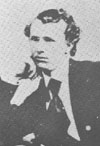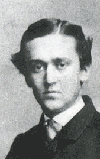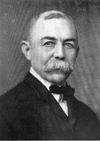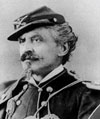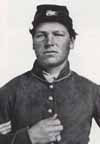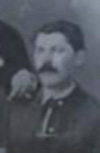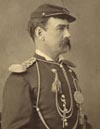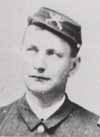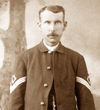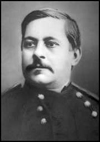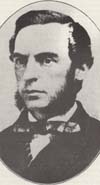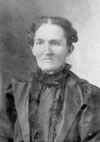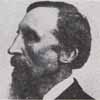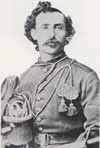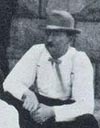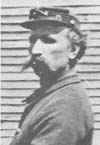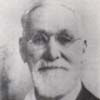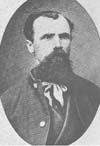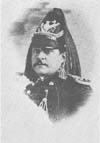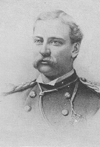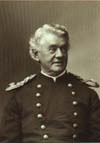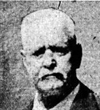Henry Charles Weihe, who was also known as Charles White, died of heart disease on October 29, 1906, at Fort Meade, South Dakota, and was buried in the Old Post Cemetery there. He was a Sergeant in Company M who participated in the valley and hilltop fights and was wounded. See 7th Cavalry Troopers in South Dakota for his obituaries and pension file.
William Millard Caldwell (left) died on October 30, 1913, in Clearfield, Clearfield County, Pennsylvania, and was buried in the Old Town Cemetery there. He was a Private in Company B who was not present at the battle due to detached service at Powder River, Montana.
Anton Seibelder was born in Lichtenvoorde, Germany, on October 31, 1828. He was a Private in Company A who participated in the valley and hilltop fights during the battle.
Boston Custer (left) was born on October 31, 1848, in New Rumley, Ohio. He served as a Guide for the 7th Cavalry and was killed along with his two brothers and a nephew during the battle. His body was found near Last Stand Hill.
James Madison DeWolf (right) married Fannie J. Downing on October 31, 1871. He was the Acting Assistant Surgeon for the 7th Cavalry who was killed during the retreat from the valley fight.
William Thomas Craycroft (left) died on October 31, 1906, in Dallas, Texas, and was buried in the West Hill Cemetery in Sherman, Texas. He was an 1869 graduate of the United States Military Academy who was a First Lieutenant in Company B. He was not at the battle because he was in St. Paul, Minnesota, purchasing horses.
John Fox was born on November 1, 1846, in Buffalo, New York. He was a private in Company D who participated in the hilltop fight.
William Frederick Braendle was born in Wurttemberg, Germany, on November 1, 1855, to Jakob Friederich and Johanna Magdelena Pfisterer Braendle. He was a Private in Company C who was not present at the battle due to detached service at Yellowstone Depot.
Edwin Butler Wight married Abbie Jane Gowell on November 1, 1886. She was the second of his three wives with whom he had two children. He was a Private in Company B who was not at the battle due to detached service at Powder River, Montana.
James E. Moore died on November 1, 1894, in Union, South Carolina. He was a Farrier with Company B who was with the pack train and in the hilltop fight.
Charles Camillus DeRudio (left) died on November 1, 1910, in Los Angeles, California, and was buried in the San Francisco National Cemetery. He was a First Lieutenant in Company E who participated in the valley and hilltop fights.
William Kane died in Washington, D.C., on November 2, 1879, and was buried in the Soldiers’ Home National Cemetery there. He was a Private in Company C who was not present at the battle due to illness.
John E. Armstrong was born on November 4, 1836, to Joshua and Matilda Faunce Armstrong in Philadelphia, Pennsylvania. He was a Saddler for Company A who was killed in the valley fight during the battle.
A memorial service was held for Frederick Deetline (left) on November 4, 1978, during which his Medal of Honor marker for extraordinary heroism was revealed.

